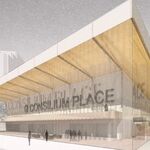St. Clair streetcar Toronto’s deadliest for pedestrians
Five people killed by streetcars on St. Clair since November 2013, more than any other route in the city, TTC figures show
By
Eric Andrew-GeeStaff Reporter
Sat., May 9, 2015
Nine pedestrians have been killed by Toronto streetcars since 2010. Five of those fatal collisions were on St. Clair Ave. W.
The north Toronto street has become the city’s deadliest light rail route for people on foot, transit commission figures show, pointing to possible safety risks associated with the thoroughfare’s controversial separated tram lanes.
The TTC’s disclosure, made at the Star’s request, comes after one of its operators was charged with careless driving in a collision that killed an 80-year-old man at St. Clair Ave. W. and Arlington Ave. in March.
The St. Clair streetcar — running between Yonge St. and Gunns Loop — has been dogged by complaints since its renovation, maligned for cost overruns, interfering with first responders and slowing traffic.
Residents have also spoken up about apparent danger to pedestrians since reports of fatalities along the streetcar line began emerging steadily in the media.
Andrew Athanasiu, senior policy advisor for councillor Josh Matlow — whose Ward 22 contains the eastern-most stretch of the St. Clair streetcar — said Matlow’s office emailed the TTC about possibly installing guard rails along the right-of-way in November.
“They responded and said they are looking into it,” said Athanasiu.
“We’re looking forward to seeing a plan that will protect pedestrians.”
Defenders of the St. Clair streetcar say the road is safer now than it was before its overhaul. They point to studies showing fewer total collisions with pedestrians since roadwork was finished in 2010.
But city politicians and transit experts have raised safety issues connected with the “right-of-way” model used on St. Clair and Spadina Aves.
Streetcars move faster on dedicated tracks, and their location halfway across the road can encourage jaywalking, these people say.
Indeed, another pedestrian death on the TTC’s list was caused by the Spadina streetcar, and a cyclist was also killed on that route in 2010.
The TTC counts four pedestrian deaths caused by the St. Clair streetcar in recent years. However, the number rises to five if you count a November 2013 incident in which an 81-year-old woman was struck by a St. Clair streetcar and launched into a passing SUV near Yonge St. Her case isn’t included in the official figures because the woman wasn’t declared dead at the scene and the commission wasn’t notified of her death in hospital, said TTC spokesperson Brad Ross.
Ross noted that all but one of the deadly streetcar crashes since 2010 was deemed not preventable by TTC investigators.
He also argued that right-of-way tracks make riders less likely to be hit by other vehicles because they allow streetcars to stop at platforms separated from traffic.
“It is safer for our customers who are exiting and boarding our streetcars,” Ross said.
City councillor Joe Mihevc, whose Ward 21 straddles St. Clair Ave. W., said pedestrian death figures shouldn’t overshadow other safety gains produced by the dedicated streetcar lanes.
“There’s lies, damned lies, and then there’s data,” he said. “At the end of the day, is St. Clair a safer street now than it was pre-right-of-way? Absolutely it is. That’s the most important stat or piece of data that needs to be considered here.”
A 2014 study co-authored by SickKids researcher Dr. Andrew Howard showed a dramatic overall
decrease in collisions involving pedestrians since the separated streetcar line was put in place.
Mihevc suggested that a rise in risky crossing could be partly responsible for the spike in fatal collisions with pedestrians. Some walkers treat the streetcar lanes like traffic islands, he said, and pause on the right-of-way while they cross the street.
He also noted that streetcars generally move faster than before — nominally one advantage of a dedicated line — and that their newfound velocity could make them more dangerous.
“One of the things certainly on St. Clair is that streetcars are going faster than before because they’re not caught up in mixed traffic,” he said.
Daniel Hammond, director of Transport Action Ontario, also suggested that the relatively large space between stops on the route could be letting Toronto’s 30-ton trams build up momentum, making collisions more violent. “On St. Clair the spacing between the stops is a little further, so it allows the streetcars to accelerate,” he said.
Another factor in the spate of deaths may be age. All five of the pedestrians killed in streetcar collisions on St. Clair were over 65.
A 2012 Coroner’s review found that seniors made up a hugely disproportionate number of the pedestrian deaths in Ontario, accounting for 36 per cent of fatalities and just 13.2 per cent of the general population.
The neighbourhoods along St. Clair Ave. W. between Oakwood Ave. and Yonge St. contain an average of about 40 per cent more seniors than Toronto at large, according to city figures.
Mihevc said a public education campaign around safe road-crossing could lessen some of the risk for seniors and other residents.






